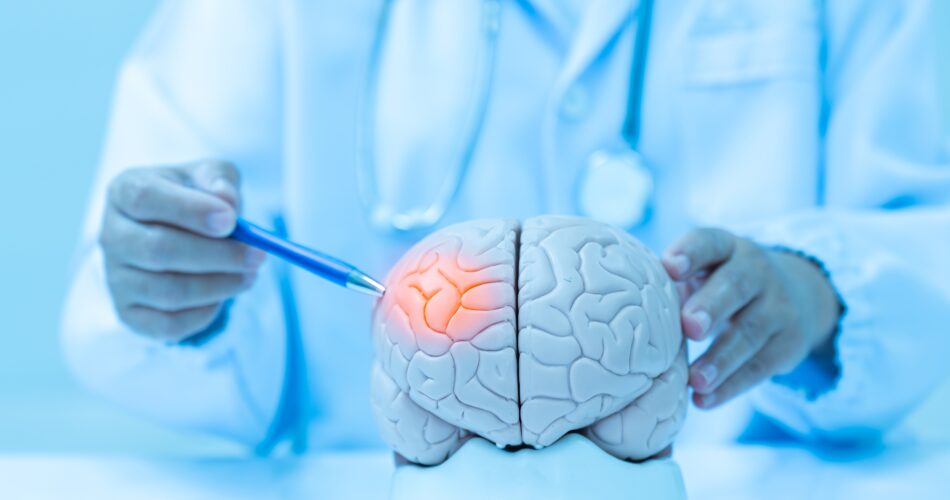Time waits for none, especially when you are or see someone experiencing symptoms that appear serious. It becomes more than essential to recognise them and act fast.
A brain stroke, also known as a cerebral stroke or cerebrovascular accident (CVA), is a serious medical condition that occurs when there is a disruption in the blood supply to the brain. Strokes can have devastating consequences, including paralysis, loss of speech, and even death.
However, recognising the symptoms early and seeking immediate medical attention can make a significant difference in the outcome.
In this blog, we will discuss the symptoms of a brain stroke that you need to recognise to act swiftly and potentially save a life.
Sudden numbness or weakness:
One of the most common and easily recognisable symptoms of a brain stroke is sudden numbness or weakness, typically on one side of the body. This can affect the face, arm, or leg. You might notice that the person’s smile is lopsided, they cannot raise both arms or one leg is weaker than the other. This weakness or numbness is often painless and can come on suddenly.
Trouble speaking:
Another telltale sign of a stroke is difficulty speaking or slurred speech. The person may be unable to find the right words, or their speech may be incomprehensible. If you notice someone struggling to communicate, it’s a strong indicator that something is amiss.
Trouble walking:
A sudden loss of balance or coordination can be a sign of a brain stroke. The person may find it challenging to walk or even stand. They may stumble, veer to one side, or appear unsteady on their feet. This can be alarming, as it usually happens suddenly without any previous issues with mobility.
Severe headache:
A severe and abrupt headache, often described as the worst headache of one’s life, can be a sign of a brain stroke. This headache is usually different from regular headaches and might be accompanied by other stroke symptoms. If someone experiences this type of headache, it’s essential to seek immediate medical attention.
Vision problems:
Blurred or blackened vision in one or both eyes is another symptom to watch for. The person may have trouble seeing out of one eye or both, and their vision might become suddenly impaired.
Facial drooping:
Facial drooping is a classic symptom of a stroke. If one side of the face appears to droop when the person tries to smile or express themselves, it is a clear sign that something is wrong. This is often one of the easiest symptoms to spot.
Sudden confusion:
People experiencing a stroke may suddenly become disoriented or confused. They might not understand what’s happening or have trouble comprehending simple instructions. If someone you know suddenly becomes confused or delirious, it’s a cause for concern.
Difficulty swallowing:
Trouble with swallowing, known as dysphagia, can also be a symptom of a brain stroke. The person may find it hard to eat or drink, and choking or coughing while trying to swallow can occur.
Loss of consciousness:
In some cases, a brain stroke can lead to a loss of consciousness. The person may become unresponsive or fall into a coma. This is a severe and critical situation that requires immediate medical attention.
Shortness of breath:
Stroke symptoms can extend to the respiratory system. People experiencing a stroke may have difficulty breathing, leading to shortness of breath. This can be especially concerning if it occurs suddenly and is accompanied by other stroke symptoms.
Nausea and vomiting:
Nausea and vomiting can sometimes be associated with a brain stroke. If someone exhibits these symptoms along with other signs of a stroke, it’s essential to take them seriously.
Loss of bowel or bladder control:
In rare cases, a stroke can result in a loss of bowel or bladder control. This is a severe sign of a stroke and requires immediate medical attention.
What to do if you suspect a stroke:
If you notice any of these symptoms in yourself or someone else, it is crucial to act quickly:
Call emergency number:
The most important step is to call emergency services immediately. Time is of the essence when it comes to stroke treatment, and the sooner medical professionals can assess the situation, the better the chances of a positive outcome.
Stay calm:
Try to remain as calm as possible and reassure the person who is experiencing the symptoms. Stress and anxiety can exacerbate the situation.
Keep track of time:
If you can, note the time when the symptoms first appeared. This information can be crucial for the medical team in determining the best course of action.
Do not drive:
If you suspect someone is having a stroke, do not attempt to drive them to the hospital yourself. Emergency medical services have the equipment and expertise needed to provide the necessary care during transportation
Provide comfort:
Keep the person comfortable and encourage them to lie down with their head slightly elevated.
Closing thoughts
Recognising the symptoms of a brain stroke is vital for early intervention and improved outcomes. Knowing the signs and acting swiftly can make a substantial difference in the person’s recovery and overall well-being. Strokes are medical emergencies, and time is a critical factor, so it’s essential to be aware of the symptoms and how to respond in the event of a stroke. Your quick actions could potentially save a life or prevent long-term disability.




